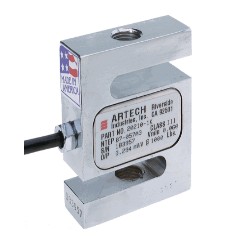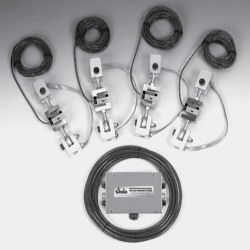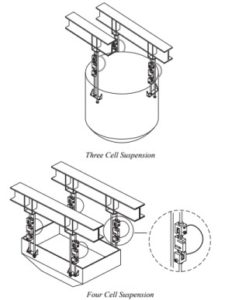Using scales at a concrete batching facility is extremely important to guarantee the quality and consistency of the final product. In fact, it can be argued that the use of scales and weighing equipment, is one of the most critical aspects of the entire concrete production process. There are several reasons why this is the case, which we’ll discuss below.
Accurate Ingredient Mix
Using scales and strain gauge load cells helps to ensure that the correct amount of ingredients are used in the concrete mix. Concrete is made up of a mixture of cement, water, sand, and aggregate, and the proportions of these ingredients play a major role in determining the strength and durability of the final product.
If the amounts are not accurately measured, the concrete may be too weak or too brittle, which can result in costly failures or repairs down the line. By using hopper scales and load cells to measure the exact quantities of each ingredient, concrete producers can ensure that the batch is consistent and accurate.

Quality is important. But, utilizing scales at a concrete batching facility can also help to reduce waste and save the concrete company quite a bit of money. If the proportions of ingredients in the concrete mix are not accurately measured, it can lead to excess or shortages, which can result in wasted materials and additional costs. By using hopper scales with strain gauge load cells to measure the exact quantities of each ingredient, concrete producers can become more efficient.
Load Cells for a Hopper
Scales and weighing equipment is used at batch plants. Strain gauge load cells are installed on hoppers to weigh the elements of the mix. It is very important that any moving parts of the batching system are inspected on a regular basis for any buildup or seizing.
Furthermore, using scales at a concrete batching facility can help to improve efficiency and productivity. Accurate measurement of ingredients using scales allows for the production of consistent batches of concrete, which can be processed more quickly and efficiently. This can help to reduce the time and labor required to produce each batch, resulting in increased productivity and profitability for the concrete producer.

In addition to the benefits mentioned above, using scales at a concrete batching facility can also help to improve safety. Accurate measurement of ingredients using scales can help to reduce the risk of accidents or injuries caused by handling heavy or hazardous materials. This can help to create a safer work environment for employees and protect the overall safety of the facility.
Cement Hopper Load Cell Selection, Installation & Best Practices
Single cell suspension configurations are relatively simple and work well in low
capacity applications which have minimal disturbance from mixers, materials flow,
or other agitators. For best results, the vessel should be symmetrical with respect to
the suspension point and used to weigh only self-leveling materials, such as liquids.
This allows the center of gravity to rise along the same vertical line each time and
minimizes the tendency of the vessel to bind against the bumpers. The bumpers only
serve to limit sway caused by accidental contact or other external forces. Erroneous
scale readings result if the vessel contacts the bumper. Instead of bumpers,
horizontal stay rods may be used to rigidly hold a vessel which has a tendency to
sway sideways. Also, note that single cell systems must be restrained from rotating
to prevent the suspension hardware from coming unscrewed.

Multiple cell suspension configurations commonly involve three or four load cells.
One advantage to using three suspension points is that even weight distribution is
inherent in this configuration. Support points should be equally rigid and deflect by
the same amount when loaded. Otherwise, one or more of the cells may be
overloaded. For maximum stability, attach suspension rods at or above the filled
vessel’s center of gravity. In situations where there is a potential for vibration,
agitation, wind, or seismic activity, install bumpers or horizontal check rods to
check the sideways motion of the vessel. * Remember, all suspended vessel weighing systems must be protected by safety check rods, chains, or other means to prevent
damage or injury in the event of a failure.
If piping or conduit is required, make sure that it runs horizontally and verify that
the distance from the vessel to the first pipe support is 20 to 30 times the pipe
diameter. If necessary, incorporate flexible sections into the pipe. Suspension rods
should be as long as possible to minimize the introduction of side forces.
On a regular schedule, scale technicians travel to the facility to test and calibrate the weighing equipment. Scale Technicians will first make sure all parts are moving correctly. Then, the scale technician will hang certified test weights from the load cells using chains to test overall accuracy. Customers can use product as well, to increase the span of the test. Calibration will occur only if the scale is not weighing properly.
Concrete Batching Accuracy
The use of accurate scales at a concrete batching facility is extremely important for ensuring the quality and consistency of the final product, reducing waste and costs, improving efficiency and productivity, and enhancing safety. Without the use of hopper scales, it would be nearly impossible to accurately measure the proportions of ingredients in the concrete mix, resulting in subpar products and potential risks to both employees and the facility. Therefore, it is critical for concrete producers to prioritize the use and service of scales in their operations.
